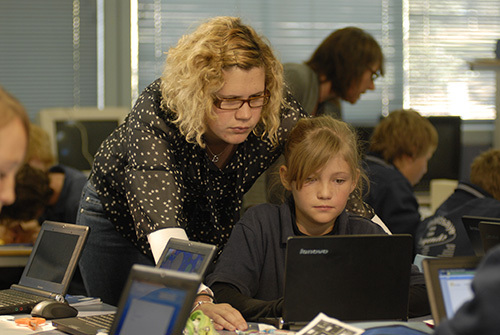
Πριν από δύο χρόνια, Πρόεδρος της Αυστραλίας Βιογραφικό, Αξιολόγηση και Αρχή Πληροφόρησης (ΕΚΔΗΛΩΣΕΙΣ), Barry McGaw and I discussed some of the big changes going on in Australia’s education system. ΕΚΕΙΝΗ ΤΗΝ ΠΕΡΙΟΔΟ, Barry εξήγησε ότι η Τεχνολογιών Πληροφορικής και Επικοινωνιών (“ΤΠΕ”) στρατηγική για σχολεία που αναπτύσσονται παράλληλα με όλα τα άλλα στο νέο πρόγραμμα σπουδών. He commented that while tech would not be treated as a separate subject in the early years, students would be offered a range of studies in this area by the time they got to grades 8 να 10.
Two years later, how has the lifestyle change created by technology impacted the Australian classroom? I am delighted to welcome to Η Σφαιρική Αναζήτηση για Εκπαίδευση, Susan Mann, Διευθύνων Σύμβουλος Υπηρεσιών Εκπαίδευσης Αυστραλία, a company overseen by the Australian Education Ministers that focuses on technology provision and service support for Australian education and training. Susan plays a key role in the conceptualization and implementation of Australian national ICT policy. Her key interest is the transformative potential of information and communications technologies for teaching and learning.
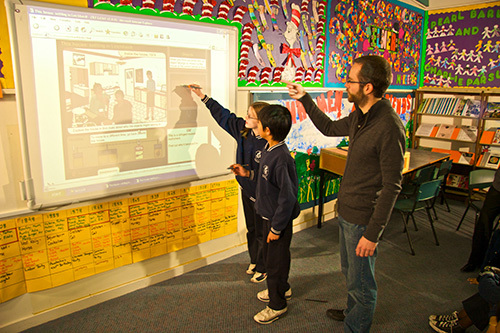
How has technology impacted the Australian education system? Τι βλέπετε ως τα πλεονεκτήματα και τα μειονεκτήματα από την άποψη της μάθησης?
Teaching and learning across Australia has seen many changes in recent years with an increased use of technology in our schools. This has been supported by successive federal and state government investment programs, most recently through the Digital Education Revolution policy of the previous Labor government. Schools are supporting the use of technology with ongoing resources allocated to their technology infrastructure. There is a growing conversation around Bring Your Own Device policies within schools.
Καθώς τα σχολεία της Αυστραλίας κινούνται προς τη μεγαλύτερη ενσωμάτωση της τεχνολογίας στη διαδικασία της διδασκαλίας και της μάθησης, Οι δάσκαλοι αρχίζουν να συνεργάζονται περισσότερο σε απευθείας σύνδεση με τους συναδέλφους τους σχετικά με τη διδασκαλία τους. Μέσα από τη δική τους βούληση και μέσω προγραμμάτων που προσφέρονται από τα εκπαιδευτικά τους συστήματα, they are also beginning to up-skill and improve their knowledge about how technology can support their teaching and their students’ μάθηση.
Teachers are increasingly interested in identifying digital curriculum resources they can use with their students. The state and territory and federal governments over the last decade have jointly funded development of the National Digital Learning Resources Network that now provides access for Australian teachers and students to over 20,000 high quality resources directly linked to the Australian Curriculum through a nationwide platform called Scootle.
The use of technology in schools is beginning to have a positive impact, and the advantages of the use of technology in the classroom are becoming increasingly obvious. Students are clearly used to using technology for their learning both within and outside the classroom. Οι εκπαιδευτικοί αναφέρουν αυξημένα κίνητρα από τους μαθητές όταν αυτοί εμπλέκονται σε ψηφιακή μάθηση, και προκαταρκτική έρευνα μας δείχνει ότι αυτή η αυξημένη συμμετοχή αυξάνεται φοιτητές’ μαθησιακά αποτελέσματα.
The use of online formative assessment in literacy and numeracy, through a system available to Australian teachers called “Improve,” provides immediate feedback to students about their learning and presents them with resource support to respond to learning issues. Teachers are finding that this assists them to support individual students’ learning and to compile student achievement profiles.
There are still challenges for teachers and school to ubiquitously integrate technology into students’ μάθηση. Not all Australian schools have equal access to bandwidth and infrastructure. The ‘bring your own device’ trend raises equity issues for socio-economically disadvantaged students, which are often compounded by those same students being unable to afford technology at home. Some teachers are more familiar and confident with using technology than others. The expectations still surpass what is being delivered.
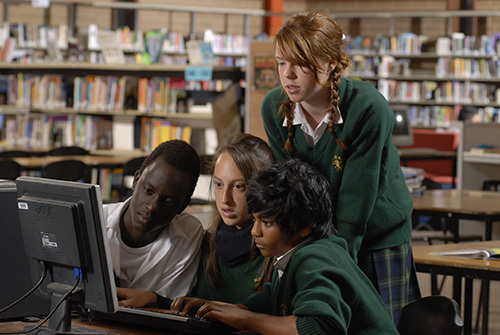
How is the role of the Australian teacher changing in the digital age?
παραδοσιακά, the role of the teacher relied on sound content knowledge in their specific areas of expertise, high level pedagogical understandings and the ability to engage students in learning. These are still important attributes but teachers are now required to supplement these with additional skills and capabilities in the use of digital technology to support learning. Instead of being the ‘font of all knowledge,’ teachers are required to be effective facilitators of student learning both within and outside the classroom at any time.
The new national professional standards, established by the Australian Institute for Teaching and School Leadership, specify expected ICT capacities of teachers, school leaders and new teachers. Some teacher training institutions have now embraced the need to significantly change the way they train teachers.
Growing interest in social media and professional learning networks has seen the development of online forums that are supporting professional learning and practice from the grass roots level. A national social networking platform, called Scootle Community, is being enthusiastically embraced by teachers across Australia, and over 500 teachers per week have been joining this platform and creating and participating in a range of network forums.
What digital learning tools have been implemented in Australia and what do educators see as the pros and cons of these?
Some teachers and parents are of the view that there is still a place for traditional texts, but this is changing rapidly as universal access to digital tools becomes the norm. With the growing number of mobile devices in the hands of students, Οι περισσότεροι εκπαιδευτικοί που εργάζονται με εφαρμογές και εργαλεία συνεργασίας από ποτέ. Οι εκπαιδευτικοί επιλέγοντας μια ευρεία ποικιλία των ψηφιακών εργαλείων για να καλύψει ένα φάσμα των μορφών και διαδικασιών μάθησης που υποστηρίζουν τη συνεργασία, δημιουργία και επιμέλεια περιεχομένου.
Digital textbooks are not really taking off at present. The publishers have not yet achieved a suitable licensing regime that accommodates students changing devices and covers sufficient numbers of students at a realistic price. Ωστόσο,, commercial providers such a Mathletics that market to parents are becoming popular to support extension of students at home.
Flexible online delivery of language learning, especially for Asian languages, has been a focus of funding by the Australian government and Education Services Australia, a ministerial company that has released the Language Learning Space. This engaging, inquiry-based environment has been initially developed to support teachers and students in the acquisition of Chinese language. Using a game-based learning model, the Language Learning Space has been designed to scaffold learning through challenging scenarios.
More ubiquitous mobile technologies have led to a significant shift from desktops and laptops to the use of mobile tablets. Australian schools are increasingly using apps as they become available to support education.
Digital tools are constantly changing and adapting to the collaborative nature of technologies. Identifying high quality resources in such a context continues to be challenging for government and private providers.
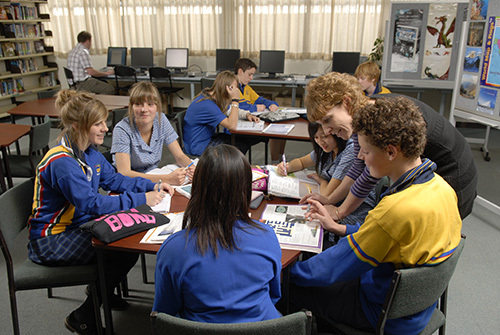
How has technology impacted curriculum design in Australia?
The new Australian Curriculum has been made ‘machine readable,’ which enables it to be directly linked to digital curriculum resources for students and for teacher professional learning, as well as other data in the future such as curriculum-related assessment items.
The Australian Curriculum is only available online, and teachers access this through a system that enables them to customise their view of the curriculum according to their subject area and curriculum approach.
‘Technology’ is a cross-curriculum perspective running through the new Australia Curriculum, and there are a number of technology subject areas as well that include coding, which has not previously been part of the Australian Curriculum.
Research indicates that the use of tablets, κινητά τηλέφωνα, internet sources and social media platforms such as Facebook and Twitter continue to infiltrate classrooms in the US rapidly. Are you seeing the same trend in Australian classrooms? Σε ποιο βαθμό είναι η χρήση αυτών των εργαλείων μέρος του προγράμματος σπουδών σας? Είναι μια ηλικία κάτω από το οποίο πιστεύετε ότι αυτά τα εργαλεία δεν είναι κατάλληλα στις τάξεις εκεί?
Increased use of mobile technologies by students is certainly reflected in Australian schools. With an ever-growing number of mobile devices, social media platforms and access to freely available collaboration tools, Australian classrooms are evolving into global classrooms.
Students and teachers are collaborating with experts and peers to ensure that rich project-based learning experiences occur across curriculum areas. School systems in Australia work under the guidelines of social media sites such as Facebook, where the age limit is 13 years or over.
Australian schools have access to a range of tools and resources that promote best practice in the use of social media tools. Για παράδειγμα, the Australian Communications and Media Authority provides cybersafety resources for students, teachers and parents.
Information is the key for users of technology. Είναι σημαντικό ότι οι πόροι είναι διαθέσιμοι να υποστηρίξουν τους μαθητές σε μοντέλα βέλτιστων πρακτικών και να αναδείξει τις προσδοκίες της ασφαλούς και υπεύθυνης χρήσης των online εργαλείων. Ο ασφαλή σχολεία Hub είναι η τελευταία σε απευθείας σύνδεση εργαλείο για τη στήριξη της Αυστραλίας πλαίσιο της Εθνικής ασφαλή σχολεία. Παρέχει πρόσβαση στα προγράμματα και τις στρατηγικές που χτίζουν υποστηρικτική, ασφαλή μέρη για να μάθετε.

Φωτογραφίες ευγένεια Υπηρεσιών Εκπαίδευσης Αυστραλία.
Για περισσότερα άρθρα στο Got Tech? σειρά: Η Σφαιρική Αναζήτηση για Εκπαίδευση: Πήρε Tech? – Φινλανδία, Η Σφαιρική Αναζήτηση για Εκπαίδευση: Πήρε Tech? – Καναδάς, Η Σφαιρική Αναζήτηση για Εκπαίδευση: Πήρε Tech? – Σιγκαπούρη, Η Σφαιρική Αναζήτηση Για την Εκπαίδευση: Πήρε Tech? – Ηνωμένες Πολιτείες, Η Σφαιρική Αναζήτηση Για την Εκπαίδευση: Πήρε Tech? ΙΒ Σχολεία σε έναν εικονικό κόσμο, Η Σφαιρική Αναζήτηση για Εκπαίδευση: Πήρε Tech? – Αργεντινή
Στο παγκόσμιο Αναζήτηση για Εκπαίδευση, μαζί μου και παγκοσμίως γνωστή ηγέτες σκέψης συμπεριλαμβανομένου του Sir Michael Κομμωτήριο (Ηνωμένο Βασίλειο), Ο Δρ. Michael Block (ΗΠΑ), Ο Δρ. Leon Botstein (ΗΠΑ), Καθηγητής Clay Christensen (ΗΠΑ), Ο Δρ. Linda Ντάρλινγκ-Hammond (ΗΠΑ), Ο Δρ. Madhav Chavan (Ινδία), Ο καθηγητής Michael Fullan (Καναδάς), Ο καθηγητής Howard Gardner (ΗΠΑ), Ο καθηγητής Andy Hargreaves (ΗΠΑ), Ο καθηγητής Yvonne Hellman (Η Ολλανδία), Ο καθηγητής Kristin Helstad (Νορβηγία), Jean Hendrickson (ΗΠΑ), Καθηγητής Rose Hipkins (Νέα Ζηλανδία), Καθηγητής Cornelia Hoogland (Καναδάς), Αξιότιμο Jeff Johnson (Καναδάς), Η κ. Chantal Kaufmann (Βέλγιο), Ο Δρ. Eija Kauppinen (Φινλανδία), Υφυπουργός Tapio Kosunen (Φινλανδία), Ο καθηγητής Dominique Λαφοντέν (Βέλγιο), Ο καθηγητής Hugh Lauder (Ηνωμένο Βασίλειο), Καθηγητής Ben Levin (Καναδάς), Lord Ken Macdonald (Ηνωμένο Βασίλειο), Καθηγητής Barry McGaw (Αυστραλία), Shiv Nadar (Ινδία), Καθηγητής R. Natarajan (Ινδία), Ο Δρ. PAK NG (Σιγκαπούρη), Ο Δρ. Denise Πάπα (ΗΠΑ), Sridhar Rajagopalan (Ινδία), Ο Δρ. Diane Ravitch (ΗΠΑ), Richard Wilson Riley (ΗΠΑ), Sir Ken Robinson (Ηνωμένο Βασίλειο), Καθηγητής Pasi Sahlberg (Φινλανδία), Καθηγητής Manabu Sato (Ιαπωνία), Andreas Schleicher (PISA, ΟΟΣΑ), Ο Δρ. Anthony Seldon (Ηνωμένο Βασίλειο), Ο Δρ. David Shaffer (ΗΠΑ), Ο Δρ. Kirsten Μοναδική Are (Νορβηγία), Στήβεν Spahn (ΗΠΑ), Yves Theze (Lycee Francais Η.Π.Α.), Ο καθηγητής Charles Ungerleider (Καναδάς), Ο καθηγητής Tony Wagner (ΗΠΑ), Sir David Watson (Ηνωμένο Βασίλειο), Καθηγητής Dylan Γουίλιαμ (Ηνωμένο Βασίλειο), Ο Δρ. Mark Wormald (Ηνωμένο Βασίλειο), Ο καθηγητής Theo Wubbels (Η Ολλανδία), Ο καθηγητής Michael Young (Ηνωμένο Βασίλειο), και ο καθηγητής Minxuan Zhang (Κίνα) καθώς εξερευνούν τα μεγάλα ζητήματα της εκπαίδευσης εικόνα που όλα τα έθνη αντιμετωπίζουν σήμερα. Η Παγκόσμια αναζήτηση για την Εκπαίδευση της Κοινότητας Σελίδα
C. M. Rubin είναι ο συγγραφέας των δύο πολυδιαβασμένα online σειρά για την οποία έλαβε ένα 2011 Βραβείο Upton Sinclair, “Η Σφαιρική Αναζήτηση για Εκπαίδευση” και “Πώς θα μας Διαβάστε?” Είναι επίσης ο συγγραφέας του μπεστ σέλερ τρία βιβλία, Συμπεριλαμβανομένων Η Ρεάλ Αλίκη στη Χώρα των Θαυμάτων.


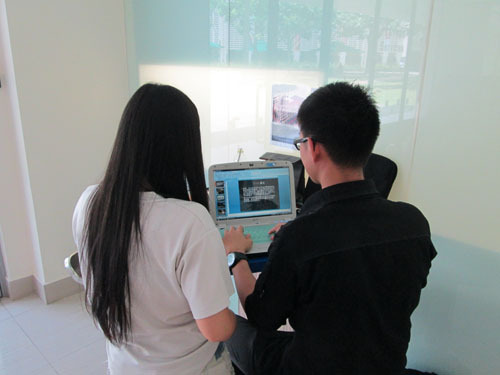
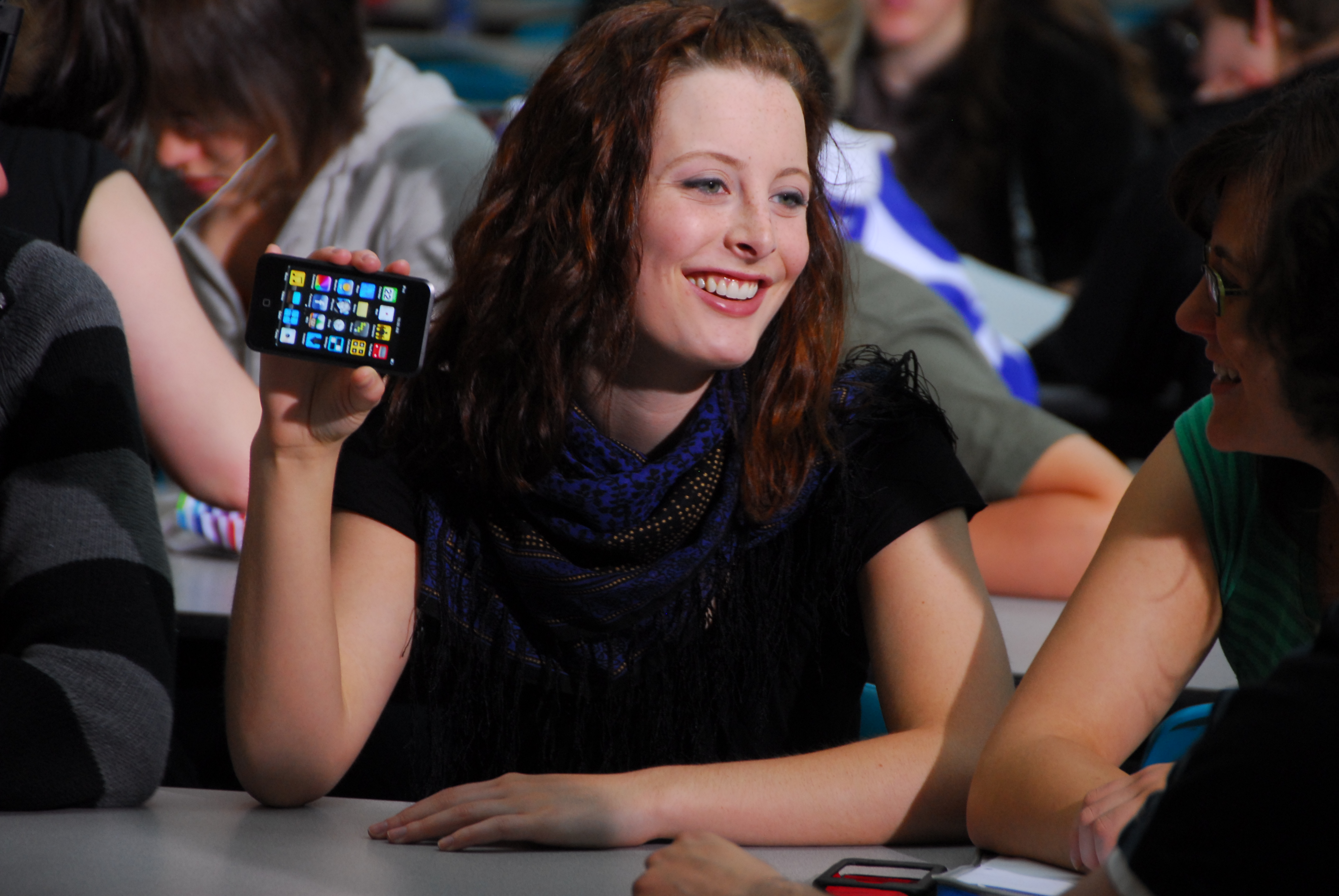
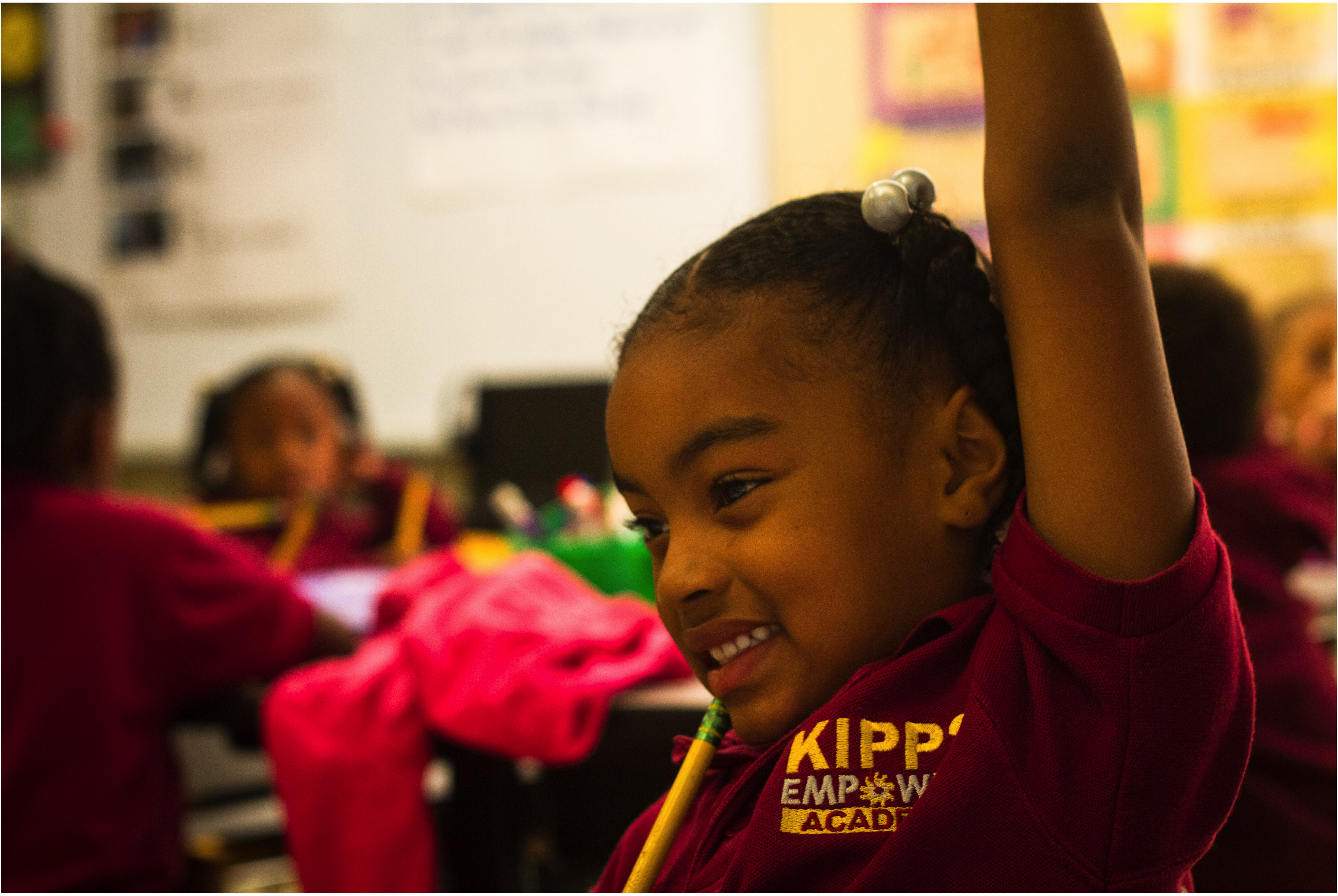
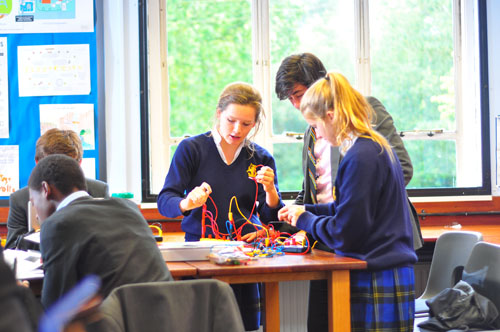
Πρόσφατα σχόλια